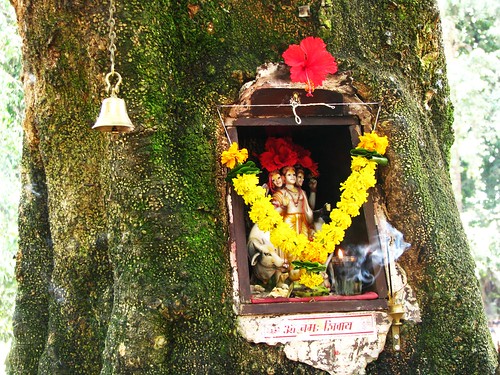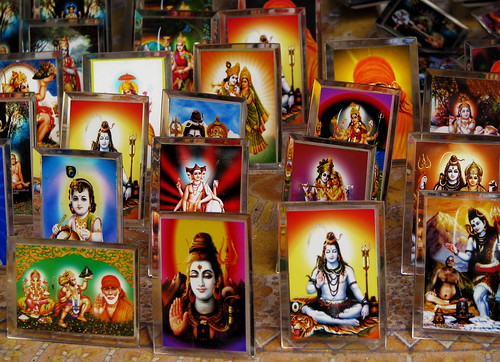(Warning: This is a long post. Please feel free to sip some tea while you read this or you may feel exhausted by the time you finish with the post.)
Hospitality in my country begins with thanda ya garam. That's hot or cold ?
Most people opt for the former one - hot. Now, 'hot' can further be classified into tea or coffee. The most likely choice being tea. No, we are not done, yet. There's more, with the next question being - with or without, i.e., with sugar or without sugar. That's it! No more classification unless you belong to a section of the society which savours tea in the most perfect manner by smelling, swirling and feeling - making good use of their palates and olfactory senses. They would then describe the tea in its purest form and describe the taste as plain, tippy or woody (there's apparently more to it, but since I don't belong to the 'connoisseur' category, let me hold my tongue).
In India tea is a popular beverage that finds it's significance in a non-discriminating manner amongst the rich and poor. You will find people from all classes standing at the same thela across the road sipping the same tea served in the same kind of glass. The price also remains the same.
If Juliet from Romeo and Juliet was born in India she would have done away with the rose in her famous lines. Instead it would be:
"What's in a name? That which we call a chai
By any other name would taste as sweet..."
That's true! We are like this only. You may call it tea. But for us, it's what we are, it's our identity. You will be amazed at how the different states in this country have managed to create its own variant of the chai. The basic recipe stays the same - boil water, add tea dust or leaves, sugar for sweetness and milk. What changes are the add-ons. Get the basic recipe right (which, trust me is no rocket science) and create your own special-tea.
I think I have rambled a lot. Now let the tea do some talking. So, we are off on a journey to tea-land. And my genes, my senses and my prejudices are pushing me hard to start with the busy and plucky city of Mumbai. This city is a teapot of cultures and living here has introduced me to the different variants of that hawt, humble beverage called tea. Oh, did I tell you that we have our own terms of endearment for this beverage???
Paani kam* is best found in Irani cafes and is generally enjoyed with a plate of brun or gutli pao - hard bun, crispy on the outside and soft inside, very very unique to the city of Mumbai. The perfect combination is a cup of paani kam with brun smeared with a generous serving of maska (butter) or mixed fruit jam. This treat, let me remind you once again, is unique to Irani cafes which are slowly bidding goodbye to the Mumbai landscape.
 |
| Paani kam at Cafe City |
Then there is the cutting chai.. Easily and readily available at your local thapri chaiwallah. The name is not suggestive of the special tea leaves or the special milk used in the tea. It only means 'half tea', which means "please don't fill the whole glass, I won't be able to drink it". Cutting chai is popular with people from all sections of the society. You have a chaiwallah who stations himself on a busy street attracting people from all walks of life. It's one place where the labourer, the CEO, the medical representative, the beggar, the banker, the artist and the cabbie share a common space connected by a glass of cutting chai.
Masala chai is tea made with milk, sugar, water and a few aromatic spices like ginger, cardamom and cloves. Sometimes herbs are also added.
Black tea and green tea do not require any introductions from me as the names say it all. But hey, hold on before you rejoice thinking that you know everything. We have our desi versions of these too. If you travel to the misty mountains of Kashmir you will be treated to a cup of kahwah - a traditional Kashmiri drink made by boiling green tea leaves with a few aromatic strands of zaffran (saffron), cinnamon bark and cardamom. And if they really like you they may add a few rose petals too. For the sweetness bit, either sugar or honey is added to the drink, topped with some crushed nuts.
If you decide to travel down south, to the northern part of Kerala, more popular as Malabar, you will be treated to a glass of black tea. Beware! You may mistake it for someone's name when the host calls out for a suleimani*. But what comes out of the kitchen is a glass of freshly brewed black tea with sugar and a dash of lime. The suleimani often finds company with the traditional Malabari biriyani as it is believed to aid digestion.
Call it cutting*, paani kam* or without, tea is tea. Chai toh chai hain bhai! Ek cutting dena bhai. Ek paani kam. Ek masala. Ek without.
(One cutting please. One less water. One masala. One without.)
All expressions for the same thing...chai. Tea. The beverage that starts working on the Indian from the moment he opens his eyes to a new morning.
While in some cultures the tea finds itself a place in high class social events, here, in India it's a great leveller.
*The term paani kam literally mean 'less water'. Here, the tea will be made with a generous amount of milk and less water.
* Suleimani is served in Hyderabad too.
P.S. If you think I am done with my post on tea, you are mistaken. I am exhausted and I need a break. Off to have some Mallu chai. See you after a break with more tea-posts :)








